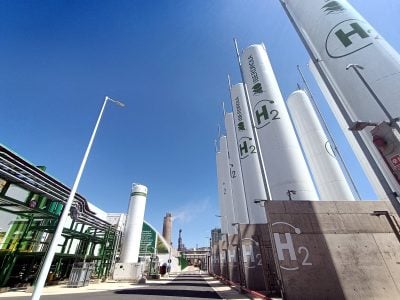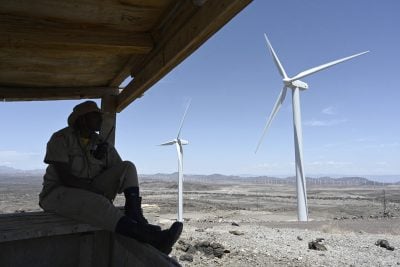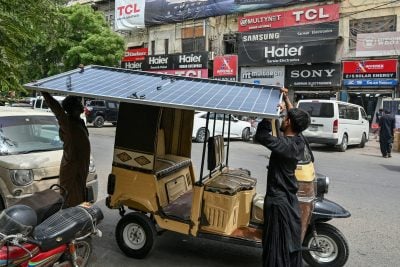In 2010 the number of people living in urban spaces exceeding the global rural population for the first time. Cities, which cover less than 2% of the earth’s surface, consume almost 80% of energy worldwide, and account for more than 50% of emissions.
In the fight against climate change, the urban space constitutes a key battleground. Nowhere is the need for sustainable urban development more acute than sub-Saharan Africa – one of the world’s most rapidly urbanising regions. Despite accounting for less than 10% of global emissions, the continent looks set to bear the brunt of the effects of climate change.
With cities across Africa already struggling to accommodate the continent’s fast-growing urban population, some are turning to innovative architecture for solutions.
Kigali, the capital of Rwanda, is one such city. In its suburbs, imagine four-story apartment blocks rising up amid tree-lined boulevards, spacious courtyards and well-tended allotments. Across town, earthwork steps provide spectators with a view of a cricket oval hosting some of the world’s best teams.
This depiction of the city may feel more like a vision of utopian living than a bustling East African capital. But as Rwanda grapples with the highest rates of urbanisation in the continent, foreign and local architects are being enlisted to work on ambitious projects that could provide a model of sustainable living in Africa.
The need for such a trailblazer cannot be overstated. According to a new report by the Global Commission on the Economy and Climate, 22m people are being added to African cities every year. As a result, planners and architects will play a key role in building cities – which account for the bulk of emissions and energy use globally – that avoid the pitfalls of slum expansion, decrepit infrastructure and climate-altering pollution.
“The ongoing issues that cities like Lagos and Nairobi currently face are the results of early plans that took no account for an urban African future, as well as decades of planning regimes incapable of managing rapid urban growth,” says Kelly Doran, manager of East African programmes at US architects MASS Design Group.
“The incredible opportunity facing Kigali and other smaller emerging urban centres is to plan and develop in totally novel ways.”
That opportunity is being seized by architects attracted to the Rwandan government’s ambitious green agenda, concrete urban plans and reputation for strong policy execution.
Boston-based MASS Design Group was founded in 2008 during the design process for Butaro Hospital in Burera District, and has since branched out into primary schools, doctors’ housing and neonatal units. Light Earth Designs, a firm with British and South African roots, has been in the country for over five years and is behind the housing and Rwanda Cricket Stadium plans.
What the practices have in common, aside from their Kigali outposts, is a growing expertise in drafting sustainable solutions to Africa’s rapidly growing urban spaces. In particular, both firms stress the importance of using local construction materials to reduce landlocked Rwanda’s dependence on environmentally costly imports.
“They’ve realised the home-grown approach is really important, otherwise they’re completely reliant on high-carbon, imported materials,” says Tim Hall, founding partner of Light Earth Designs.
Despite earlier resistance to local building materials often seen as regressive, Hall says that the government are now fully behind the drive to encourage a domestic construction industry.
The impact of this locally fabricated – “lo-fab” – philosophy is already evident in Kigali’s expanding cityscape. At Umubano Primary School, a MASS Design project, local brick and papyrus reeds replace foreign-made materials in a structure designed to reduce energy consumption.
Yet trading foreign materials for local alternatives is only a part of Rwanda’s grand vision. With a population projected to more than double to 26m by 2050, environmentally considerate housing solutions will be at the forefront of efforts to avoid unrestrained sprawl and environmental degradation.
Light Earth Design’s pilot project intends to show that high-density living need not replicate the conditions experienced by people living in slums across the world, but can incorporate gardens, water retention technology and active energy production.
“We’re addressing the issue of the densest population in Africa per kilometre with limited land, most of it sloping, and how you condition the first generation urban population to live at a higher density in excess of 100 units per hectare instead of your own dwelling,” says founding partner Peter Rich.
Such ambitious developments will require more than the commitment of prize-winning architects to really take off. Hall concedes that the sector is “tough to make money” in, while MASS Design receives philanthropic funding as well as project fees.
And with sub-Saharan Africa’s infrastructure needs estimated at some $93bn per year over the next decade, funds for transformative urban development are likely to be keenly fought over. The question remains whether such schemes are viable on a mass scale.
Alex Mulisa, coordinator at FONERWA, Rwanda’s fund for the environment and climate change, says that much will depend on the success of the pilot projects. If Kigali’s green neighbourhood proves a workable model, it could be rolled out in six other urban areas.
“I believe if we have the right kinds of plans that are convincing, we can go to the World Bank and other sources. It’s more to do with the extent to which we are committed to achieving our goals,” he says.
For Light Earth’s Hall, that ambition in the face of limited resources provides reasons to be optimistic about Rwanda’s urban future – and the role of this African city in the fight against climate change.
“There’s a master plan which is not flawless – like anywhere – but there’s a series of incredibly committed and talented people in a planning office that’s probably the size of a small borough in England grappling and dealing with huge issues. Show me [another] African country where they’re doing this,” he says.
David Thomas
With the support of
Want to continue reading? Subscribe today.
You've read all your free articles for this month! Subscribe now to enjoy full access to our content.
Digital Monthly
£8.00 / month
Receive full unlimited access to our articles, opinions, podcasts and more.
Digital Yearly
£70.00 / year
Our best value offer - save £26 and gain access to all of our digital content for an entire year!
 Sign in with Google
Sign in with Google 




